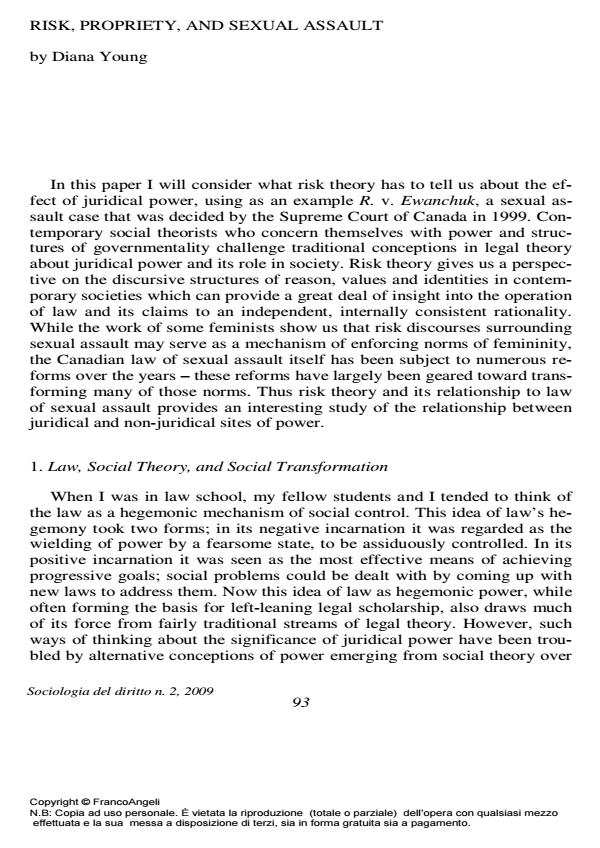Risk, propriety, and sexual assault
Journal title SOCIOLOGIA DEL DIRITTO
Author/s Diana Young
Publishing Year 2009 Issue 2009/2 Language Italian
Pages 19 P. 93-111 File size 327 KB
DOI 10.3280/SD2009-002007
DOI is like a bar code for intellectual property: to have more infomation
click here
Below, you can see the article first page
If you want to buy this article in PDF format, you can do it, following the instructions to buy download credits

FrancoAngeli is member of Publishers International Linking Association, Inc (PILA), a not-for-profit association which run the CrossRef service enabling links to and from online scholarly content.
Risk, Propriety, and Sexual Assault - Legal theorists often conceive of the law as a closed system of reasoning, and as the central mechanism through which the uses of power are conferred and circumscribed. However, social theory challenges this conception of law by telling us that a great deal of power is non-juridical in nature, operating through discursive practices that define and normalize conduct. This raises doubts as to whether juridical power can be used to achieve social transformation. Risk theory uncovers discursive practices that operate as non-juridical sites of power, by showing how risk analyses normalize contingent values through the use of value-neutral terms of statistical probabilities. For example, feminist criminologists, drawing on risk theory, have shown us how risk discourses can be used to reinforce traditional norms of femininity, particularly by responsibilizing women for minimizing the risk of sexual assault. Using an example from the Canadian law of sexual assault, this paper considers whether the law inevitably reproduces the very discourses of femininity that many law reformers are trying to disrupt, or whether it might act as a site wherein these discourses may be challenged.
Diana Young, Risk, propriety, and sexual assault in "SOCIOLOGIA DEL DIRITTO " 2/2009, pp 93-111, DOI: 10.3280/SD2009-002007